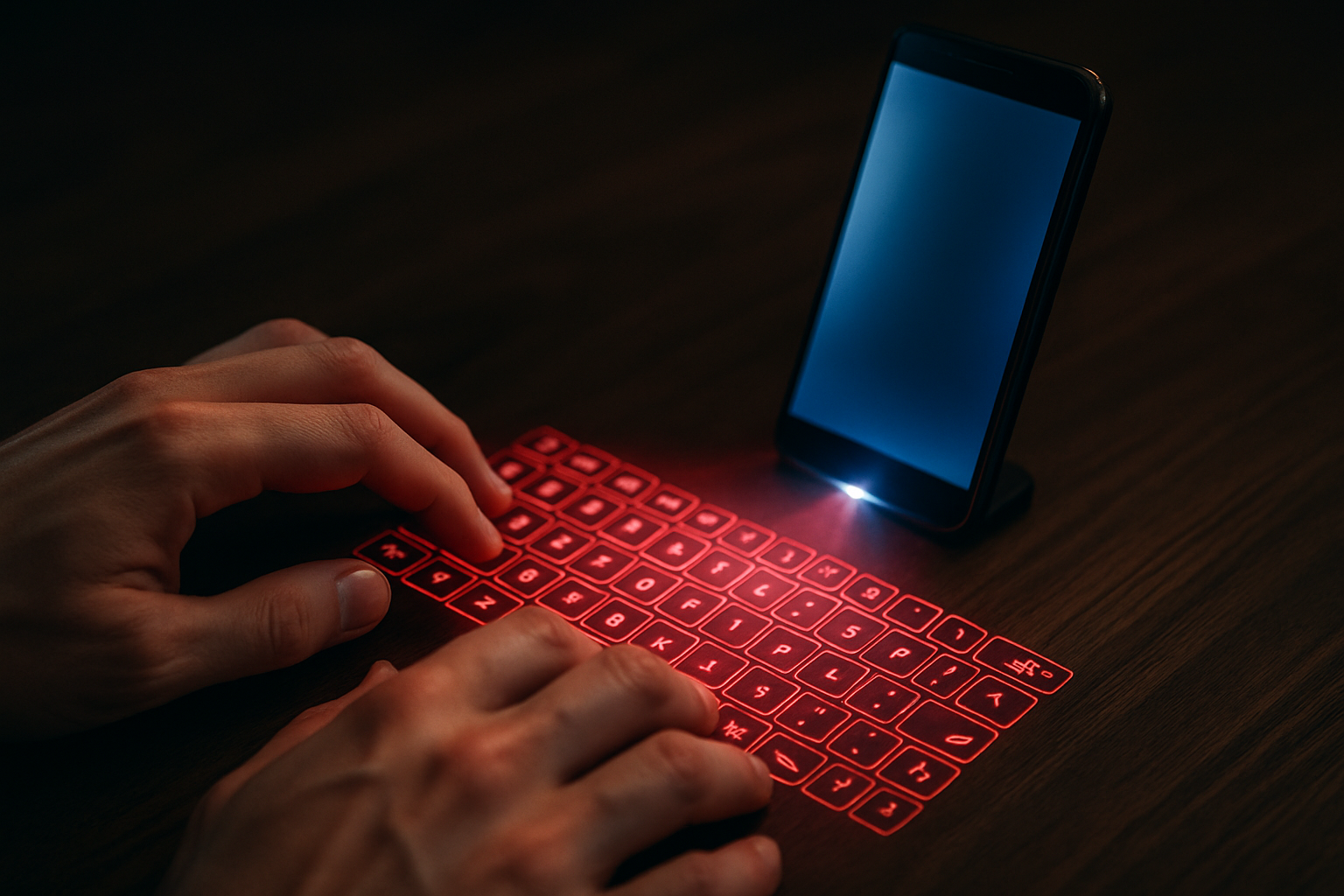Holographic Keyboards: Typing in Thin Air
In a world where technology seems to leap forward at breakneck speeds, one innovation stands out as particularly mind-bending: holographic keyboards. These futuristic input devices project a virtual keyboard onto any flat surface, allowing users to type without physical keys. It's like something straight out of a sci-fi movie, but it's rapidly becoming a reality. As we delve into this cutting-edge technology, we'll explore its potential to revolutionize how we interact with our devices and the challenges it faces on the path to widespread adoption.

Early prototypes emerged in the late 1990s, but they were clunky, unreliable, and far from practical. These systems used infrared light to detect finger movements, but they struggled with accuracy and often misinterpreted gestures. Despite these initial setbacks, researchers and tech companies saw the potential and continued to refine the technology.
How Holographic Keyboards Work
At its core, a holographic keyboard consists of three main components: a projector, a sensor, and sophisticated software. The projector beams the image of a keyboard onto a flat surface, while the sensor – typically using infrared technology – detects when and where your fingers “press” the virtual keys.
The real magic happens in the software. Advanced algorithms interpret the data from the sensor, translating your movements into keystrokes. This process happens in real-time, allowing for a typing experience that, in theory, should feel as responsive as using a physical keyboard.
The Pros and Cons of Typing on Light
Holographic keyboards offer several potential advantages over their physical counterparts. For one, they’re incredibly portable. Since the keyboard is just light, you can carry it anywhere without adding bulk to your devices. This could be a game-changer for mobile workers and travelers.
Additionally, holographic keyboards are customizable. Users can potentially switch between different layouts or even languages with a simple software update. They’re also more hygienic, as there are no physical surfaces to harbor germs.
However, the technology isn’t without its drawbacks. The lack of tactile feedback can make typing less accurate and potentially slower for some users. There’s also the question of battery life – projecting a keyboard and sensing movements requires power, which could drain your device more quickly.
Current Market and Future Prospects
While holographic keyboards aren’t yet mainstream, several companies are working to bring them to market. Celluon, for example, has already released products like the Epic and PicoPro, which project virtual keyboards for use with smartphones and tablets.
The estimated price range for current holographic keyboard devices is between $100 to $200, positioning them as premium accessories rather than standard input devices. However, as the technology improves and production scales up, we could see prices drop significantly.
The market impact of holographic keyboards remains to be seen. While they’re certainly cool, they’ll need to overcome the hurdle of user adoption. Many people are accustomed to physical keyboards and may be reluctant to switch to a virtual alternative.
Challenges and Future Developments
One of the biggest challenges facing holographic keyboards is improving accuracy and responsiveness. Current models can sometimes miss keystrokes or interpret unintended movements as inputs. Developers are working on more sophisticated sensors and software algorithms to address these issues.
Another area of focus is enhancing the user experience. Some companies are exploring ways to provide tactile feedback, such as using ultrasound waves to create the sensation of pressing a key. Others are looking at incorporating gesture controls, allowing users to perform actions like scrolling or zooming with hand movements.
The future of holographic keyboards might not be limited to flat surfaces. Researchers are exploring the possibility of projecting keyboards in three-dimensional space, allowing users to type in mid-air. While this technology is still in its infancy, it hints at the potential for even more radical changes in how we interact with our devices.
As holographic keyboards continue to evolve, they could pave the way for entirely new forms of computer interfaces. Imagine a world where any surface can become an interactive display, or where we can manipulate virtual objects as easily as physical ones. The implications for fields like education, design, and gaming are enormous.
In conclusion, holographic keyboards represent a fascinating glimpse into the future of human-computer interaction. While they still face significant challenges, the potential benefits in terms of portability, customization, and hygiene make them an intriguing prospect. As the technology continues to mature, we may find ourselves typing on thin air sooner than we think.





